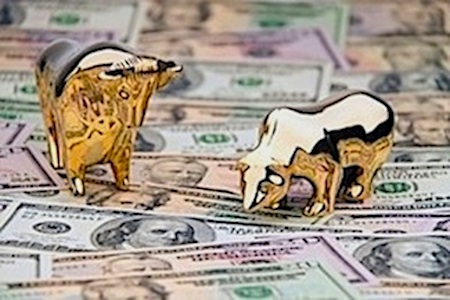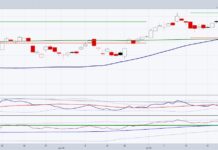April proved to be yet another month of frustration for bears and those, like me, who are simply looking (and hoping) for a stock market pullback large enough to get longer U.S. equities.
I have long harped on the notion that the credit markets are, and have been, driving the stock market since the end of the financial crisis. And still today, the beat goes on….
Today I wanted to take some time to provide an update on the credit markets with some thoughts on the current status of this great bull market.
Here is how credit performed during the month of April:
- New corporate bond issuance: April $122.4B; Year-to-date $687B
- Investment-grade credit spreads: down 1bp, from 111bps to 110bps;
- High-yield credit spreads: down 13bps, from 384bps to 371 bps;
- Investment grade credit default swap index: down 2.4bps from 66.3bps to 63.9bps
- High yield credit default swap index: down 10bps from 337bps to 327bps
- My index of credit default swaps on debt of large US financials institutions: down 27bps, from 387bps to 360bps;
- My index of credit default swaps on that of major US insurance companies: down 15bps, from 304bps to 289bps;
- Credit default swaps on subordinated debt of EU financial institutions: down 28 bps, from 195bps to 168bps; and the last but not least
- My index of credit default swaps on China sensitive financial institutions: down 74bps, from 796bps to 722bps. (Second to tightest level in the last five years)
Strangely enough, I saw a tweet on Friday suggesting that the credit market is heading for troubles because spreads are widening. I am more than a little bit curious to know which spreads that could actually portend problems in the credit markets are widening in any meaningful way.
On the back the ongoing strength in credit, buybacks and M&A transactions continue at a torrid pace: $47.1B of new buyback announcements in April ($183B YTD), and $75B of announced cash/cash-stock M&A in April ($200B YTD). If you’re tempted to thank that certainly we must be approaching the end of this credit/buybacks/M&A cycle, you should know that in April the entities pumping money into the credit markets – pensions, endowments and insurance companies – made new commitments of $18 billion to private equity funds, investing in anything from buyouts, to credit, commercial real estate, and direct lending. This is the largest monthly amount committed to new investments since I have been keeping track, and it does not include the leverage that the managers tasked with investing these funds will apply to this capital.
This leads me into my last observation as to the tone of the credit markets: recently charts of commercial and industrial loans by banking institutions with data suggesting that lending has peaked and it is turning down seem to have become very popular within the bearish establishment. While I do not debate such data, I would suggest that it almost completely misses the point of what is going on in lending. “Thanks” to all the regulations put in place after the financial crisis, a boatload of lending has shifted to the “shadow banking market”.
Here are three articles which explain that dynamic and present data which argues that demand and supply for lending facilities is in fact plentiful and growing:
Red Flags Raised As Investors Migrate To Private Credit Funds
The New Shadow Banks: Private Equity Becomes Private Credit
Credit: Debt Markets and Private Equity
 Anecdotally, we are intimately familiar with a large asset manager which has recently closed its third credit fund. Deployment of the capital raised was expected to take at least two years. As it turns out it took the manager less than 12 months to be fully invested at its projected rates of return and risk profile, and a fourth fund is now slated to be rolled out by the end of this year with a target size of 150% of the third fund. We have also just been pitched yet another private equity offering also primarily targeting credit, which is already 65% invested even before the first official closing of the fund.
Anecdotally, we are intimately familiar with a large asset manager which has recently closed its third credit fund. Deployment of the capital raised was expected to take at least two years. As it turns out it took the manager less than 12 months to be fully invested at its projected rates of return and risk profile, and a fourth fund is now slated to be rolled out by the end of this year with a target size of 150% of the third fund. We have also just been pitched yet another private equity offering also primarily targeting credit, which is already 65% invested even before the first official closing of the fund.
I am in no way oblivious to the fact that once this credit cycle ends there will be way more debt outstanding than existed in ’07-’08. I will even warn that a lot of this debt will be more illiquid than the instruments that blew up in the last crisis, and the entities holding these assets are even less regulated than the banks were when they had to be bailed out. This will make containing the next crisis even more difficult, and the consequences even more devastating.
But it is likely to be years before we get to that point, and betting against the current credit boom in the absents of any indication that it is slowing down, let alone that it is ending, can easily be as financially devastating as getting caught in the next – inevitable – downturn.
Thanks for reading.
ALSO READ: Corporate Credit Markets Party Like It’s 2017!
Twitter: @FZucchi
Any opinions expressed herein are solely those of the author, and do not in any way represent the views or opinions of any other person or entity.








